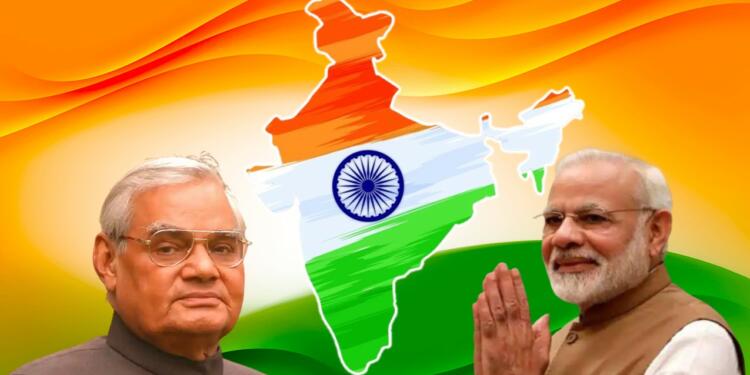Today, May 16th remains a landmark moment in Indian politics. It is on this day that two historic BJP governments came to power- the Vajpayee government of 1996 and the Modi government of 2014.
India’s political history is dotted with several landmark events- the emergency, the formation of the first non-Congress government in 1977, and the formation of multiple governments of short terms in the late 1980s and 1990s. However, 16 May marks a watershed moment in Indian politics for it twice corroborated the rise of the BJP as the country’s main political party.
The 13-day stint of the Vajpayee government
On May 16, the Vajpayee government came to power for a historic term. Riding on enhanced popularity after the Ram Janmabhoomi movement and the rise of nationalist sentiment, the BJP finally came to power for the first time on May 16, 1996.
Read more: Naya Raipur to be renamed ‘Atal Nagar’ in memory of former PM Atal Bihari Vajpayee
This was a show of intent by the BJP government. It had proved that it was here to stay. Unfortunately, the government couldn’t last for too long. It was defeated during a no-confidence motion only 13 days later.
Vajpayee’s grand announcement in 1996
Vajpayee did lose the no-confidence motion but he also made a grand announcement or a prophecy of sorts about the BJP’s disruptive rise to power that would actually get materialised in the next two and half decades to come.
Tearing into the opposition, Vajpayee had then declared, “the House which has many single-member parties which are grouping together to remove the BJP.” Talking about his party’s strong foundations, the former Prime Minister had also said, “The BJP isn’t a party that has cropped up like a mushroom, it has worked for 40 years among the masses to make its place.”
In a show of true statesmanship, Vajpayee had also declared that the BJP would continue playing a critical role in nation-building, even if it was not allowed to lead the government and stay in the opposition.
One of the BJP’s founding leaders, Vajpayee had also promised the opposition “full support” if they could set aside their deep differences and get together to form a stable government.
Vajpayee had actually understood the political situation correctly. After he was forced to step down, the opposition got together to form two successive governments led by HD Deve Gowda and IK Gujral. Both the governments couldn’t however stay in power for a reasonably long duration and in 1998, it was again the BJP that came to power, though it again lost a no-confidence motion, the party managed to win the 1999 elections and stay in power till 2004.
Going ahead, the Vajpayee government from 1998 to 2004 became a symbol of good governance and nationalistic policies. The story had however originally started on May 16, 1996.
Modi government storms to power
Some 18 years later, it was again time for the BJP to create history. This time however the party stormed to power, shattering decades-old records and literally doing away with the need of bringing in new allies and finding ways to escape the trust vote threats.
This time around the BJP-led NDA won the 2014 elections on the same day- May 16. With the announcement of the historic results, the BJP managed to breach the majority mark on its own by bagging as many as 282 seats in Parliament. This was for the first time that a party managed to cross the magic figure since the 1984 elections. Prime Minister Modi effectively ended 30 years of coalition politics in the country and started an era of strong, decisive and stable governments.
Ultimately, the BJP would go on to win the 2019 elections also and that too with a bigger margin. Again, it started on the same day- May 16, a watershed moment in Indian politics.


































